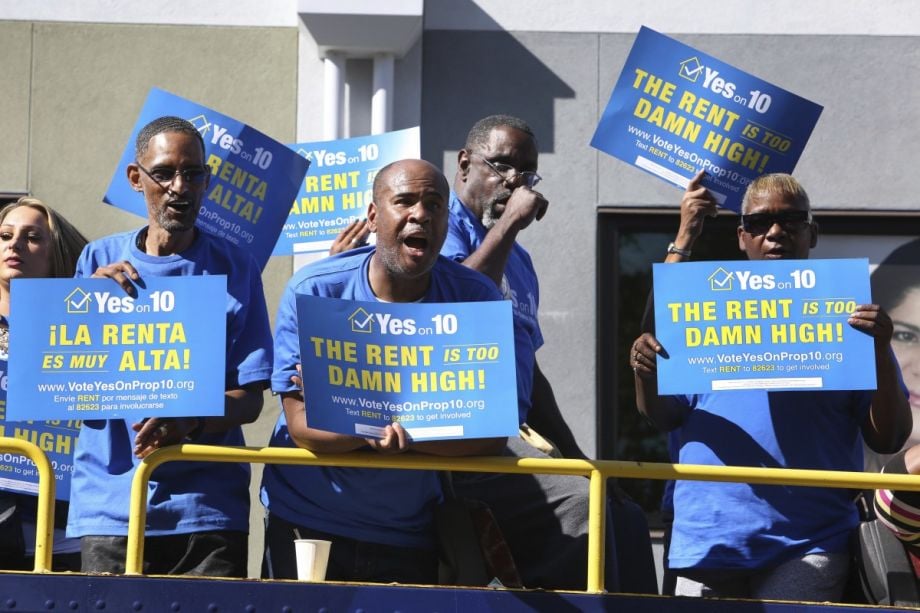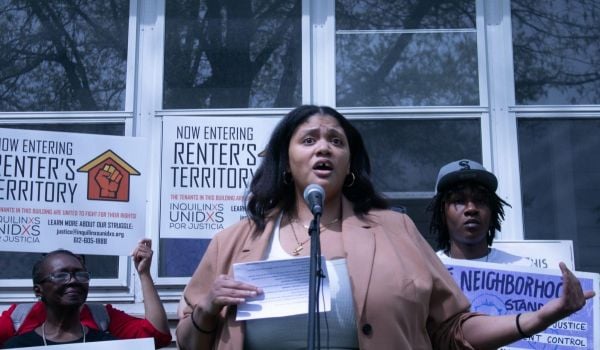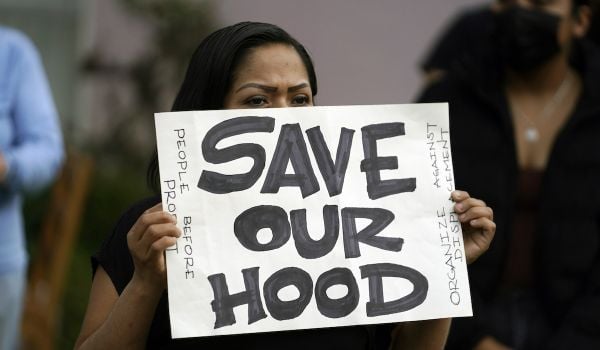Rent control is once again gaining momentum in America. A long-held economic theory about rent control is that the approach actually hurts affordability over the long term by constricting supply, for example by incentivizing landlords to convert rental units into condos. Across the United States, there’s evidence that the economic arguments against rent control are no longer as compelling to as many people as they once were.
In February, Oregon became the first state in the U.S. to adopt a statewide policy limiting annual rent increases. In March, lawmakers in Sacramento introduced a package of bills aimed at easing California’s affordability crisis, including measures to cap annual rent increases and allow cities to expand their rent control laws. Earlier this month, four Colorado lawmakers sponsored a bill that would overturn a statewide ban on local rent-control laws. Tenants in New York are lobbying for an expansion of rent control laws across the state. And the list goes on. Grassroots tenants’ rights groups deserve some credit for this shift.
“We are seeing real political momentum behind the policy of rent control and tenant protections more broadly,” says Sarah Treuhaft, managing director at PolicyLink, which, with the Center for Popular Democracy and the Right to the City Alliance, produced a 50-page report, “Our Homes, Our Future,” that was released in February. It supports nationwide rent control and highlights campaigns for rent control policies in Oregon, California, Illinois, Colorado and New York, among other places. “I think that’s real. I think that the depth of the crisis has a lot to do with it.”
Treuhaft says the three groups began thinking about producing a report a few years ago, and during the time it took to research and write, tenants’ movements around the country only gained steam. And rent control only became more relevant.
In Boston, Darnell Johnson, a regional coordinator with the Right to the City Alliance, is helping to coordinate “people’s assemblies” to develop ground-up housing and development plans that are rooted in preventing displacement in low-income communities of color.
“We see [rent control] as a solution that can get Boston to scale really quickly, when we think about the number of people that can be protected right now — the stability that we can create in maintaining diverse communities … ,” Johnson says. “We know that right now the political will is not completely there, and we know that it’s going to be an uphill fight to win. But that’s not stopping us from engaging in political advocacy and education, and using an assembly model to really aggregate community solutions and community pushback and power and leverage.”
The influence of tenant-led movements has waxed and waned over the years, and the relevance of rent control has risen and fallen with them. Peter Dreier, a professor at Occidental College in Los Angeles, wrote in a 1999 article in the journal Research in Politics and Society that, “In simple terms, the battle between tenants and landlords can be viewed as a contest between organized people and organized money.” Dreier’s article was a study of the politics of rent control in Massachusetts and California, which had both passed laws banning or restricting the policy in the mid-1990s. He wrote that landlord-led organizations began campaigning against rent control starting in the late 1970s, and soon found that state legislatures were fertile ground.
The real estate lobby has since become a powerful, stable influence on policymakers, Dreier says today. And it helped to create a model for using state law to restrict local policy.
“Their genius, if you want to call it that, was that long before ALEC came along and kind of made a science out of preemption, the landlords had done that in about 25-30 states where they basically got — in conservative states and some not-so-conservative states — they got the state legislature to pass preemption laws against rent control,” Dreier says.
Throughout the 20th century, according to Dreier, tenant movements became stronger during economic and housing crises. But during periods of relative affluence, like the 1950s, many tenants put less stake in their position as tenants, partially because many believed that they would soon be homeowners, Dreier wrote.
“What we’re seeing now is this incredible revival of tenant organizing in blue and red and purple states all over the country,” Dreier says. “It’s pretty impressive.”
The surge in tenant organizing is directly tied to the affordability crisis facing renters across the country. The growing interest in rent control isn’t surprising, says Jim Lapides, a spokesman for the National Multifamily Housing Council, a real estate group that opposes rent control. The affordability crisis is real, he says, noting that at least three 2020 presidential candidates released housing plans as part of their policy platforms. The NMHC supports parts of those plans and, in general, efforts to create more housing supply, Lapides says.
“People are looking for easy-sounding policy solutions, and obviously, our job is to show them there’s decades of research showing there are much better ways to do this, and that [rent control] is counterproductive,” Lapides says.
Dreier noted in his article that tenant movements have been strongest when they’ve been able to attract sympathy from non-tenant parties. The influence of tenants’ groups grows when they can expand their coalitions to include middle-class renters, labor unions and parts of the business community, Dreier says.
“When poor people and middle-class people are both feeling the pinch and their backs are against the wall, then that’s a better coalition,” Dreier says.
The real estate lobby can be expected to spend money to attack rent control policies every time they come up, Dreier says, and to rely on the same set of arguments about rent control’s negative impact on housing affordability. But some sectors of the business community, particularly around Silicon Valley, “have begun to recognize that the greed of the real estate industry is making it harder to do business,” Dreier says, because the lack of affordable housing makes it harder to recruit workers. If tenants can seize on those potential alliances, then oppositional arguments about the economics of rent control will begin to look more tired, he says.
“I think [the real estate lobby] is as powerful as it has been,” Dreier says. “But it’s a zero-sum game. So if the tenants get more organized, then the real estate industry is less powerful.”
This article is part of Backyard, a newsletter exploring scalable solutions to make housing fairer, more affordable and more environmentally sustainable. Subscribe to our weekly Backyard newsletter.

Jared Brey is Next City's housing correspondent, based in Philadelphia. He is a former staff writer at Philadelphia magazine and PlanPhilly, and his work has appeared in Columbia Journalism Review, Landscape Architecture Magazine, U.S. News & World Report, Philadelphia Weekly, and other publications.
Follow Jared .(JavaScript must be enabled to view this email address)








_600_350_80_s_c1.jpg)









